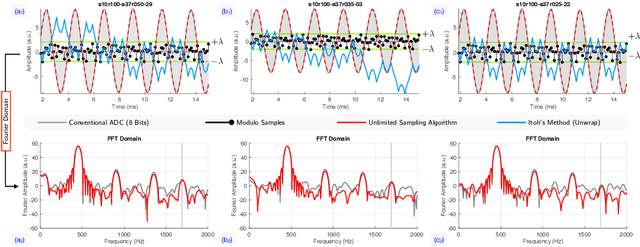Thomas Feuillen
Proceedings of the first edition of the International Symposium on Computational Sensing
Aug 29, 2023Abstract:The International Symposium on Computational Sensing (ISCS) brings together researchers from optical microscopy, electron microscopy, RADAR, astronomical imaging, biomedical imaging, remote sensing, and signal processing. With a particular focus on applications and demonstrators, the purpose of this symposium is to be a forum where researchers in computational sensing working in seemingly unrelated applications can learn, discover, and exchange on their new findings and challenges. This 3-day symposium in the heart of Europe features 6 keynotes speakers and is open to extended abstracts for scientific presentations and show-and-tell demonstrations.
Grid Hopping: Accelerating Direct Estimation Algorithms for Multistatic FMCW Radar
Jul 31, 2023Abstract:This paper presents a novel signal processing technique, coined grid hopping, as well as an active multistatic Frequency-Modulated Continuous Wave (FMCW) radar system designed to evaluate its performance. The design of grid hopping is motivated by two existing estimation algorithms. The first one is the indirect algorithm estimating ranges and speeds separately for each received signal, before combining them to obtain location and velocity estimates. The second one is the direct method jointly processing the received signals to directly estimate target location and velocity. While the direct method is known to provide better performance, it is seldom used because of its high computation time. Our grid hopping approach, which relies on interpolation strategies, offers a reduced computation time while its performance stays on par with the direct method. We validate the efficiency of this technique on actual FMCW radar measurements and compare it with other methods.
Unlimited Sampling Radar: a Real-Time End-to-End Demonstrator
Jun 30, 2023

Abstract:In this paper, the trade-off between the quantization noise and the dynamic range of ADCs used to acquire radar signals is revisited using the Unlimited Sensing Framework (USF) in a practical setting. Trade-offs between saturation and resolution arise in many applications, like radar, where sensors acquire signals which exhibit a high degree of variability in amplitude. To solve this issue, we propose the use of the co-design approach of the USF which acquires folded version of the signal of interest and leverages its structure to reconstruct it after its acquisition. We demonstrate that this method outperforms other standard acquisition methods for Doppler radars. Taking our theory all the way to practice, we develop a prototype USF-enabled Doppler Radar and show the clear benefits of our method. In each experiment, we show that using the USF increases sensitivity compared to a classic acquisition approach.
Sparse Factorization-based Detection of Off-the-Grid Moving targets using FMCW radars
Feb 09, 2021


Abstract:In this paper, we investigate the application of continuous sparse signal reconstruction algorithms for the estimation of the ranges and speeds of multiple moving targets using an FMCW radar. Conventionally, to be reconstructed, continuous sparse signals are approximated by a discrete representation. This discretization of the signal's parameter domain leads to mismatches with the actual signal. While increasing the grid density mitigates these errors, it dramatically increases the algorithmic complexity of the reconstruction. To overcome this issue, we propose a fast greedy algorithm for off-the-grid detection of multiple moving targets. This algorithm extends existing continuous greedy algorithms to the framework of factorized sparse representations of the signals. This factorized representation is obtained from simplifications of the radar signal model which, up to a model mismatch, strongly reduces the dimensionality of the problem. Monte-Carlo simulations of a K-band radar system validate the ability of our method to produce more accurate estimations with less computation time than the on-the-grid methods and than methods based on non-factorized representations.
 Add to Chrome
Add to Chrome Add to Firefox
Add to Firefox Add to Edge
Add to Edge